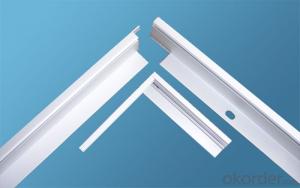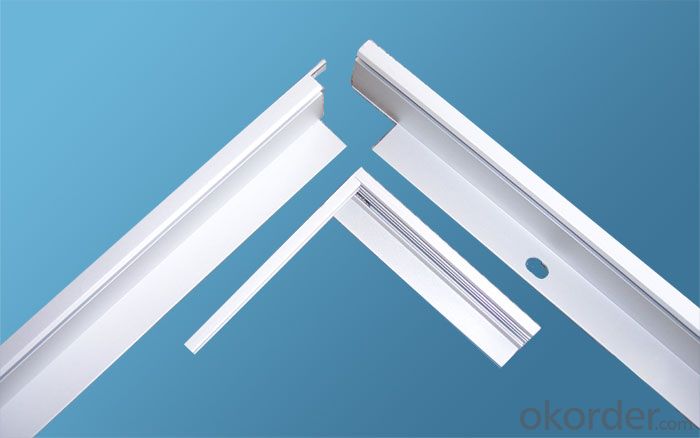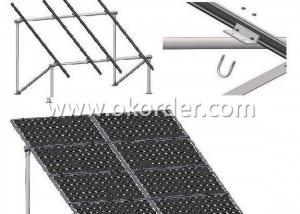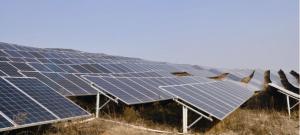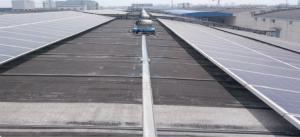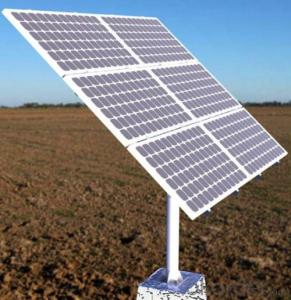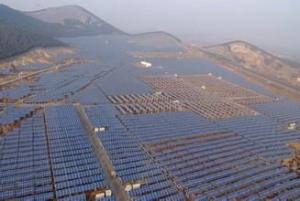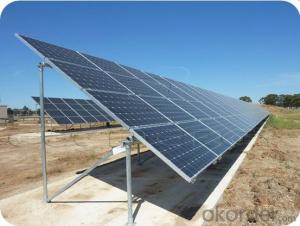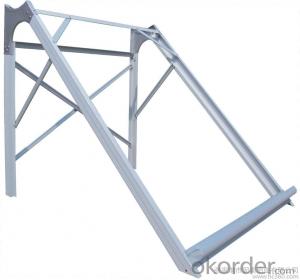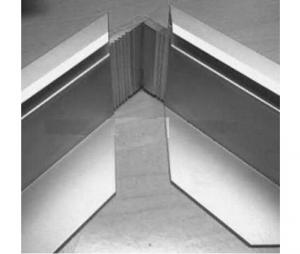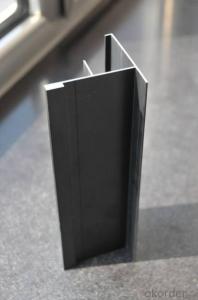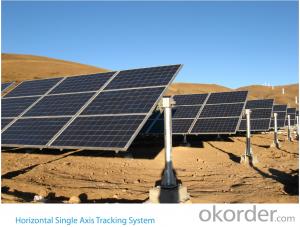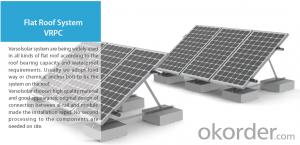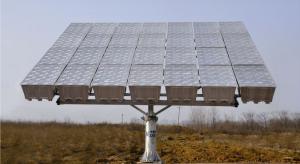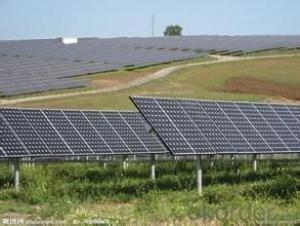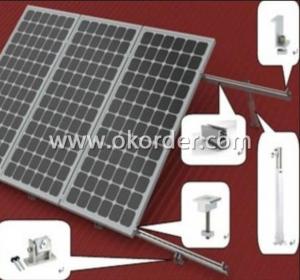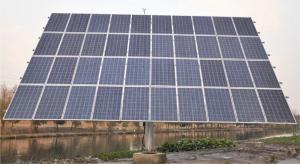Aluminium Solar Frame Roof Solar Mounting System for Solar Frame Cell Panel
- Loading Port:
- China Main Port
- Payment Terms:
- TT OR LC
- Min Order Qty:
- -
- Supply Capability:
- -
OKorder Service Pledge
OKorder Financial Service
You Might Also Like
A).Features:
(1).35*35 suitable for 80-180w solar modules
(2).40*35 suitable for 30-120w solar modules
(3).50*35 suitable for 160-220w solar modules
(4).Many more other sizes such as: 25*35,30*35,46*40,50*35 etc, all the sizes according to customer's requierments.
Common specifications:
620*286*30mm
754*669*30mm
824*545*30mm
1200*545*35mm
B).Two types:
(1) 90°-Angle
(2) 45° -Angle
C)Suface Treatment
(1). Anodizing:(Clear,silver,golden,bronze,other muiticolar.)
(2). Electrophoresis
(3). Powder,polishing,PVDF,Sandblasting,etc
Standard: GB/75237-2004,Q/320281/PDWD-2008
Certification: ISO9001:2008
Specifications: According to your design drawings and your samples
Atavantage of our products:
1.Quality-assured products, fully accredited by ISO9001 and "National Inspection-free produt".
2.The productcts are manufactured by first-class automatized equipment and and advanced quality inspection&test facilities.Die excellent accuracy up to 0.02mm.
3.High weather resistance anti scrach anticorrosion and good wearer resistance subtle edges and eligent appearance and eazy processing and installationn high brightness and hardness.
4.Wide variety of styles and sizes suitable for any tastes and budgets.
- Q: What are the advantages of using a roof-mounted solar system?
- There are several advantages of using a roof-mounted solar system. Firstly, it maximizes the utilization of available space on rooftops, which may otherwise go unused. Additionally, roof-mounted solar systems tend to have better exposure to sunlight, ensuring optimal energy generation. Furthermore, installing solar panels on the roof allows for easy integration with the existing electrical infrastructure of the building, minimizing additional costs and complexity. Moreover, roof-mounted systems are less prone to vandalism and damage compared to ground-mounted installations. Lastly, by harnessing solar energy, roof-mounted systems contribute to reducing carbon emissions and dependence on traditional energy sources, leading to a cleaner and more sustainable future.
- Q: Can a solar mounting system be used with solar-powered motorcycles?
- Yes, a solar mounting system can be used with solar-powered motorcycles. These mounting systems are designed to securely hold solar panels and can be adapted to fit various surfaces, including motorcycles. By installing a solar mounting system on a motorcycle, solar panels can be attached, allowing them to generate electricity to power the motorcycle's battery or other electrical components. This helps to increase the range and sustainability of solar-powered motorcycles.
- Q: Can a solar mounting system be used with solar-powered buses?
- Yes, a solar mounting system can be used with solar-powered buses. The mounting system helps secure the solar panels on the roof of the bus, allowing them to capture sunlight and convert it into energy to power the vehicle. This renewable energy source reduces reliance on traditional fuel and promotes sustainability in transportation.
- Q: Can a solar mounting system be installed on a multi-story building or skyscraper?
- Yes, a solar mounting system can be installed on a multi-story building or skyscraper. These systems can be designed and installed on rooftops, facades, or even integrated into the building's structure. By utilizing available space on tall buildings, solar panels can generate clean and renewable energy, helping to reduce the building's carbon footprint and energy costs.
- Q: What are the foundation requirements for a solar mounting system?
- The foundation requirements for a solar mounting system typically include factors such as the soil type and stability, the weight and size of the solar panels, the local climate conditions, and the specific design and manufacturer recommendations. These requirements are crucial to ensure the stability, durability, and performance of the solar mounting system over its lifetime.
- Q: Are there any specific considerations for installing a solar mounting system in a snowy climate?
- Yes, there are specific considerations for installing a solar mounting system in a snowy climate. One major consideration is the design and angle of the mounting system. It is important to ensure that the solar panels are angled appropriately to allow snow to slide off easily, preventing snow accumulation and potential damage. Additionally, the mounting system should be durable and able to withstand heavy snow loads. Proper snow removal and maintenance protocols should also be established to ensure optimal performance of the solar panels during winter months.
- Q: Can a solar mounting system be used on thatch roofs?
- Yes, a solar mounting system can be used on thatch roofs. However, it requires careful planning and installation to ensure the stability and integrity of the thatched roof. Specialized mounting brackets and techniques may be necessary to avoid damaging the thatch and to provide proper support for the solar panels. It is important to consult with professionals experienced in both solar installations and thatch roofs to ensure a safe and effective integration.
- Q: Can a solar mounting system be used in areas with limited access to weather monitoring systems?
- Yes, a solar mounting system can still be used in areas with limited access to weather monitoring systems. While weather monitoring systems can provide valuable data for optimizing solar panel positioning and tracking, they are not essential for the basic functionality of a solar mounting system. The primary purpose of a solar mounting system is to securely hold the solar panels in place, ensuring their stability and maximizing exposure to sunlight. Therefore, even in areas without access to weather monitoring systems, a solar mounting system can still be installed and effectively support the solar panels.
- Q: What is the weight capacity of a solar mounting system?
- The weight capacity of a solar mounting system can vary depending on the specific design and materials used. However, most standard solar mounting systems have a weight capacity ranging from 1,500 to 2,500 pounds per panel or array. It is essential to consult the manufacturer's specifications and guidelines for accurate information on weight capacity for a particular system.
- Q: Are there any government incentives or rebates available for solar mounting systems?
- Yes, there are government incentives and rebates available for solar mounting systems. These incentives aim to promote the adoption of renewable energy and may vary depending on the country or region. Some common incentives include tax credits, grants, and rebates provided by governments or utility companies. It is recommended to check with local authorities or consult a solar installer to explore the specific incentives available in your area.
Send your message to us
Aluminium Solar Frame Roof Solar Mounting System for Solar Frame Cell Panel
- Loading Port:
- China Main Port
- Payment Terms:
- TT OR LC
- Min Order Qty:
- -
- Supply Capability:
- -
OKorder Service Pledge
OKorder Financial Service
Similar products
Hot products
Hot Searches
Related keywords
